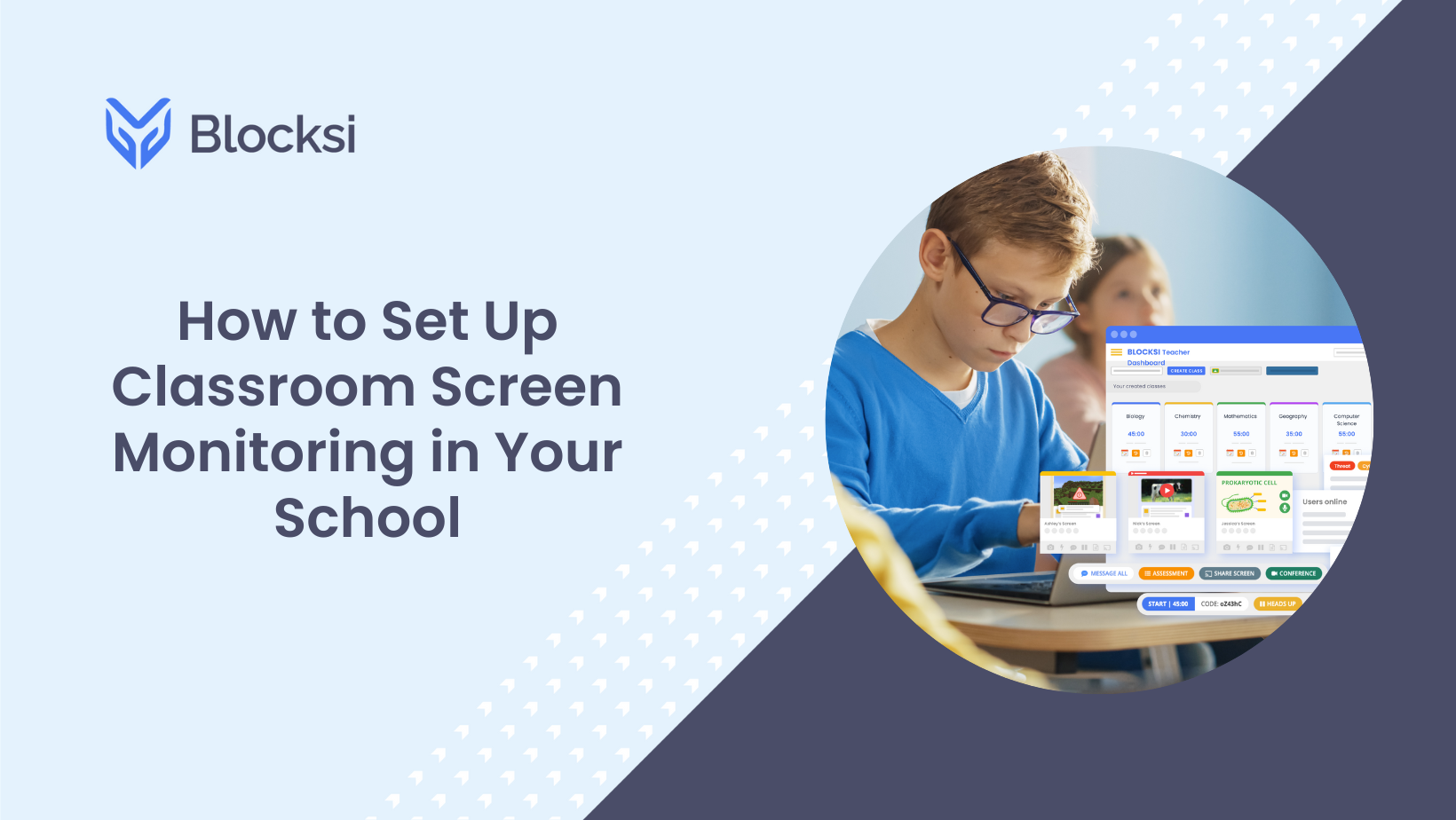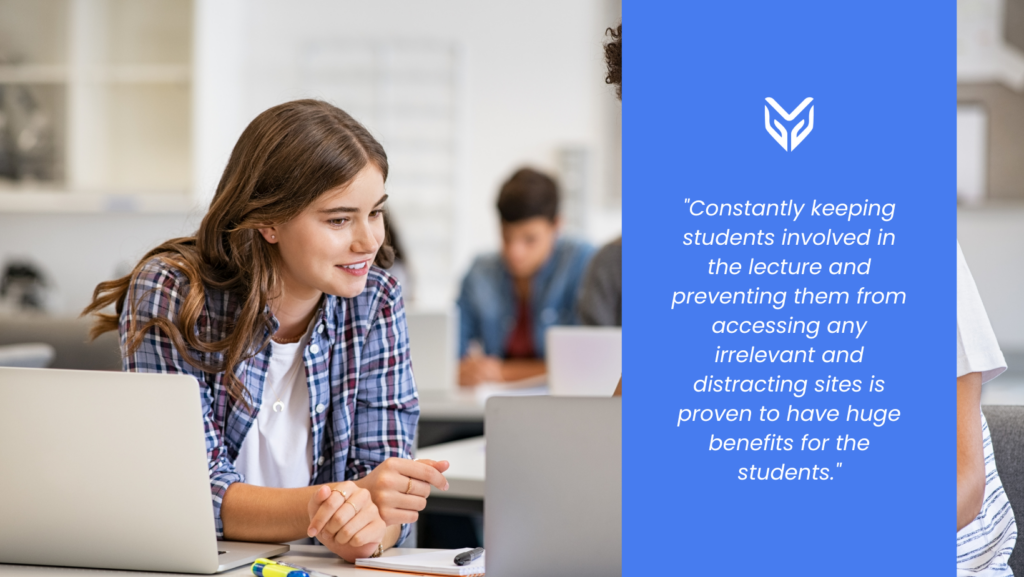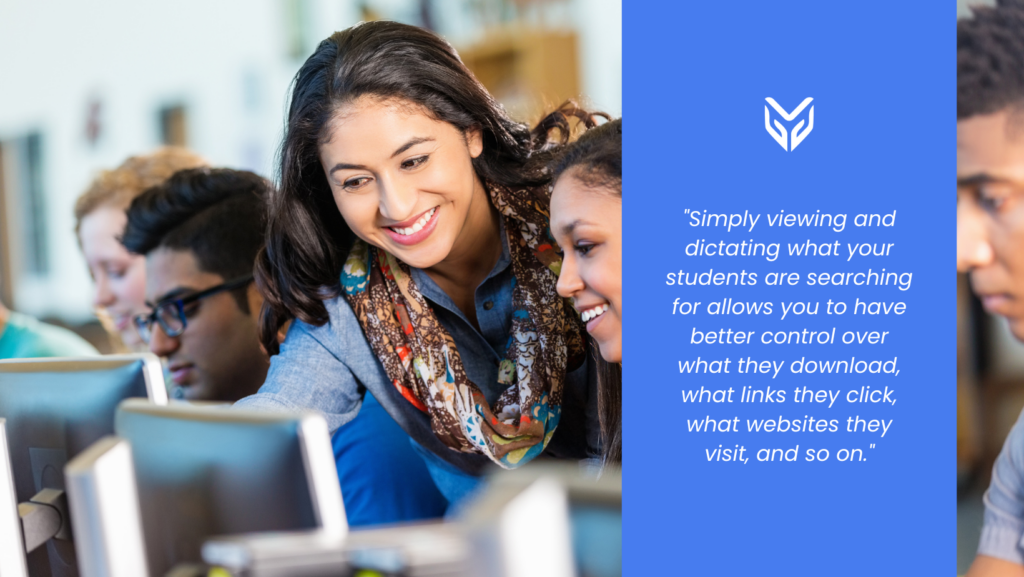NEWS
How to Set Up Classroom Screen Monitoring in Your School

Technology is a crucial tool for learning. Using devices, online material, and educational applications promote literacy, reinforce learning, and keep students engaged in the classroom. However, students usually tend to use technology as entertainment rather than a means of education, and if they are not completely using it for entertainment, they multitask. In fact, at one school, 94 percent of high school students accessed social media on their phones during class. This is obviously a problem as studies show multitasking can hamper a student’s learning and comprehension. The best way to combat this while improving pedagogy and increasing engagement in the class is by using a classroom screen monitoring tool. Keep reading to find out the best practices for keeping your students focused during the school day and how to monitor students’ screens in real time and control their screen time in your classroom.
Why is Classroom Screen Monitoring Necessary?
So why exactly is classroom screen monitoring necessary in the first place? As mentioned earlier, students tend to use their mobile phones during a school lecture, which distracts them from the task at hand and diverts their attention to unrelated content, thus missing crucial information needed for their learning development. There are a number of benefits of using a classroom monitoring tool, but the most prominent one is that it increases pedagogical performance and keeps students engaged in the classroom.
Students retain important data if they are fully focused on the learning material and not distracted. The first time a teacher or educator relates information to a student is the most important time. That’s where they remember and retain most of the information presented to them. Screen monitoring tools make teachers aware of students’ online activity during class. Nowadays, more and more school computers are equipped with software or tools that do not allow them to be used for surfing the internet freely. Teachers can use these powerful tools to see the web pages students visit on their computers in real-time. Not to mention, it saves considerable time, helping teachers to focus more on teaching and not on managing and overseeing what each individual student is doing on the web at the moment.

How to Set Up a Screen Monitoring Tool?
Setting up a screen monitoring tool is actually very simple. Of course, it depends on what kind of tool you want since installation processes vary from application to application. Some companies use different solutions than others, meaning some programs or tools can be installed directly from the browser while others need a launcher or installation wizard with a complicated installation process.
So, for a program like NexiNEO, some downloading is required, and in other cases, with programs like Blocksi, all you need to do is enable a Chrome extension on your browser, and you’re ready to use the program. All you need to do is enable this extension on every device you want to monitor, and you can then view students’ screens in real-time, act upon them, and choose exactly what they are or aren’t allowed to access during the lesson. You can even view analytics on which sites they visited, what categories they visited most frequently, how many times they tried to visit them, and how long they stayed on that website.
Benefits of Classroom Screen Monitoring
At this point, you may be wondering what exactly classroom management improves in schools and classrooms. There are plenty of benefits of using screen monitoring in schools, but in this case, we will be focusing only on the main four, which include:
- Prioritize Student Safety: The most important obligation of a school and its principal is to keep the students safe and secure in the classroom. So, how does monitoring the students’ screens help keep them safe? You can see the same thing they are seeing, so if they search for something that is potentially harmful to them or anyone around them, you can easily put a stop to it. So, for example, if you see a student searching for weapons or drugs online, you can see it on your own device and then act upon it to prevent any dangerous activities.
- Better Student Engagement for Schools: Monitoring students’ screens also significantly improves student engagement and pedagogy. Students tend to use computers for entertainment rather than learning, so keeping an eye on their screens is a good way to detect and prevent any loss of focus on their part. Constantly keeping them involved in the lecture and preventing them from accessing any irrelevant and distracting sites is proven to have huge benefits for the students.

- Keep Students on Task: Using a screen monitoring tool also keeps students on track and focused. With a classroom screen viewer, you can keep track of what your students are doing on the web during the lecture and thus engage with them more effectively. You can also control their screen time; for instance, how much time they spend on the device and which sites they frequent. This gives you an idea of what their digital activities look like. You can then cater your teaching to their needs to further improve their learning experience and help them retain crucial information.
- Increase Internet Security: Another important benefit that comes with using a classroom monitor is increased online security. In most cases, students aren’t that well versed in internet safety and security or specific digital technical knowledge. So, letting them visit and explore virtually every single website can prove to be a security risk. With screen monitoring, risks like this can be easily prevented or reduced. Simply viewing and dictating what your students are searching for allows you to have better control over what they download, what links they click, what websites they visit, and so on.

Where to Find a Classroom Screen Monitoring Tool
A lot of companies provide some form of screen viewing tools; for example, Monitask, which is a screen overview software that allows employers to see what their employees are doing in real time, thus preventing them from spending work hours on social media. A more suitable option for a classroom or school setting would be an application like Linewize or Blocksi, both of which require only a browser extension. Linewize is more often used for security reasons, while Blocksi is made specifically for school teachers, educators, and even principals, to help support a fun, productive, and safe learning environment.
Simply put, a classroom screen monitoring tool is basically a classroom management aid with huge benefits. Using educational technology, like classroom monitoring apps, can help teachers better engage with students, control their screen time, and view their computer activity. It allows the teacher to keep an eye on the students’ online activities while they are in the classroom, saving them valuable time that would otherwise be spent walking around the room and keeping tabs on each individual child.
Most of these software tools allow for automated reports and statistics to help teachers keep abreast of how many times their pupils have been on Facebook throughout the day, as well as allowing teachers to oversee specific control sites, if necessary. This enables teachers to determine who is spending their time productively on schoolwork and who needs some additional encouragement, direction, and guidance to stay on task. So, if you are wondering if you should install a classroom monitor, the answer is almost unanimously “Yes.” If you need additional information, click the button below and find out more today.





